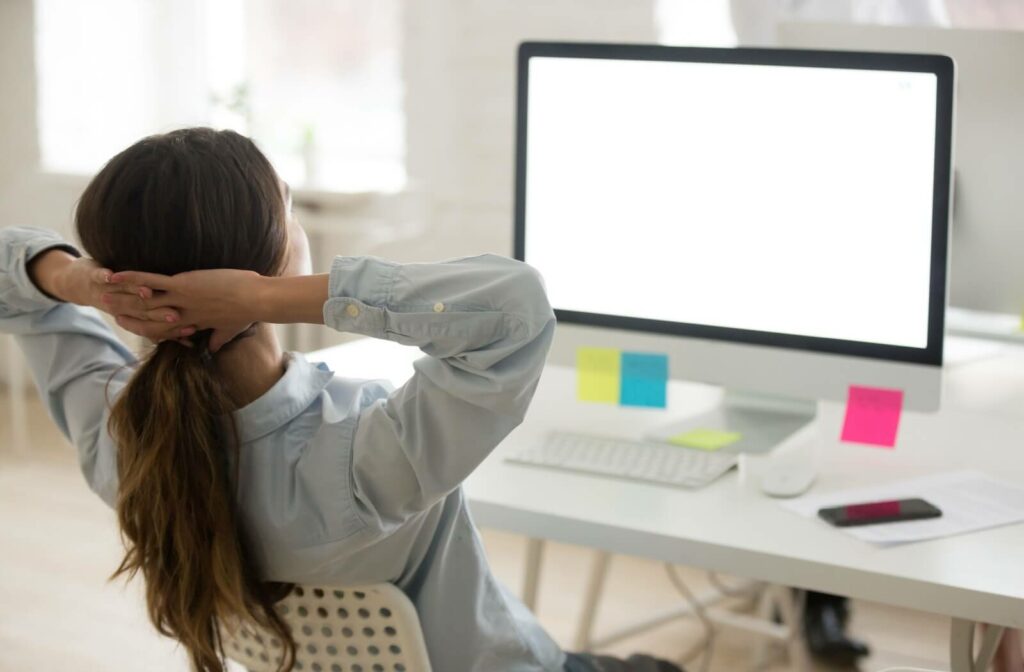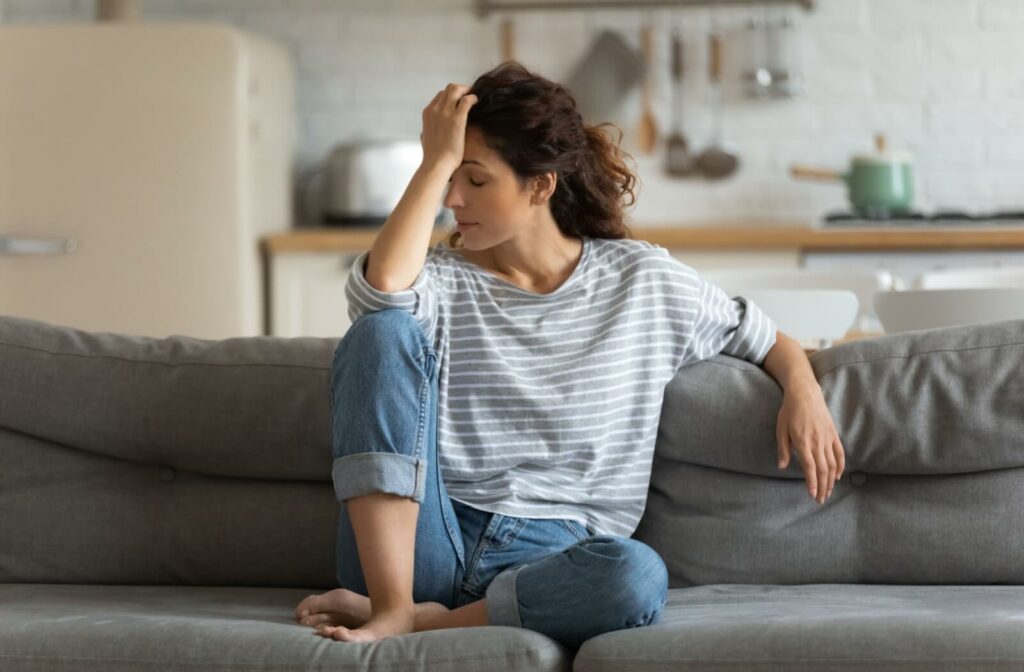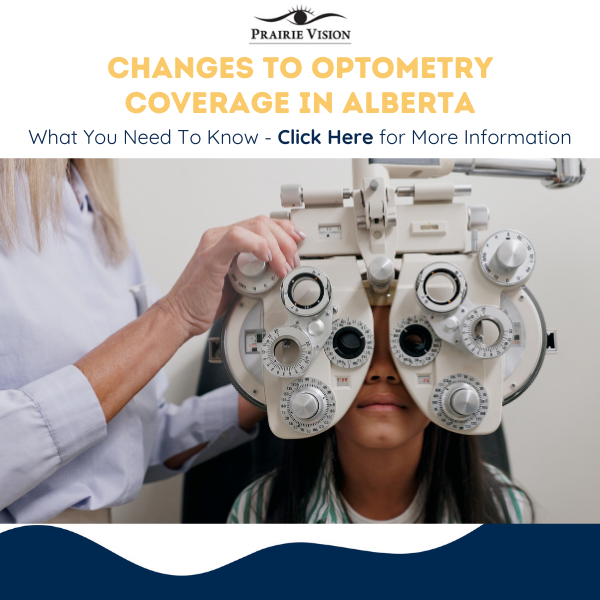Screens are everywhere—they’re a fundamental part of the modern world. However, widespread use of screens means that many people nowadays have to deal with eye strain (and sometimes dry eye) in their day-to-day lives. It’s a common problem, and it can lead to all kinds of unpleasant symptoms like dryness, frustration, and more. So how long does eye strain last, and what can you do to stop it?
Eye strain typically lasts a few hours to a day. It all depends on how severe your symptoms are and whether or not you take a break. If you notice a heavy feeling, soreness, or strain in your eyes, take a break as soon as you can.
What Is Eye Strain?
Eye strain happens when the tiny muscles in your eyes work harder than they’re meant to. These muscles, responsible for helping your eyes focus and move, are like any other muscle—when they’re overworked, they send you signals that they need a break.
When you spend hours looking at a screen, reading, or focusing, these muscles don’t have time to recover. This, in turn, causes them to become strained and can also lead to discomfort. It’s just like when your legs feel after running for too long—it’s pretty obvious when your muscles need a break.
There is good news, though! While unpleasant, eye strain isn’t a permanent problem.
How to Recognize Eye Strain
Eye strain isn’t always easy to spot—especially at first. It tends to begin with a persistent sore feeling in your eyes. Your eyes may feel heavier than normal, or like they’re being pulled in opposite directions.
If you don’t take a break to give your eyes a rest, you’ll likely also begin to experience:
- Headaches
- Blurred or double vision
- Eye irritation, like itching or burning
- Difficulty focusing on objects nearby
- Increased sensitivity to light
- Soreness in your back and neck
These symptoms all indicate that your eyes need a break. Fortunately, eye strain is preventable—and it all starts with a few minor changes.
Tips for Preventing Eye Strain
To prevent eye strain, you need to recognize the early signs that your eyes need a break. After that, it’s about conscious efforts to take a step back and help your eyes relax.
It helps to:
- Follow the 20-20-20 rule by looking at something 20 feet away for 20 seconds every 20 minutes.
- Ensure your workspace has good lighting to avoid glare or harsh reflections on your screen.
- Adjust your screen’s brightness and contrast to a level that feels comfortable for your eyes.
- Make sure your seating and screen position are ergonomically set up, so your eyes aren’t straining to focus at awkward angles.
These precautions give your eyes a rest, even if it’s just for a short few seconds.
Can Eye Strain Cause Dry Eyes?
Eye strain and dry eyes often overlap. However, one doesn’t cause the other. Instead, they just share some similar causes—like using screens for too long.
People tend to blink between 15-20 times per minute on average. This helps replenish your tear film and keeps your eyes protected and hydrated. It’s an important part of keeping your eyes relaxed, protected, and healthy.
When you use screens or focus on anything for too long, blinking frequency decreases significantly. People only tend to blink around 4 times per minute when focusing. This makes it harder for your eyes to keep themselves moist and protected, which quickly leads to dry eyes.
That’s why dry eyes and eye strain often go hand in hand. However, dry eye is a complex condition, and it’s often more than one factor causing the condition.

What Can Cause Dry Eyes?
Dry eye is a condition caused by an imbalanced tear film. While screens sometimes contribute, they’re rarely the only cause. Dry eye also develops due to:
- Exposure to dry or air-conditioned environments
- Aging and hormonal changes
- Certain medical conditions, like Sjögren’s syndrome and rheumatoid arthritis
- Use of certain medications, such as antihistamines or antidepressants
- Poor diet, nutrition, and hydration habits
Once you identify what’s causing your dry eyes, you can begin addressing the underlying problem. And if you’re not sure where to start, visit your optometrist.
How to Treat Dry Eyes
Treating dry eyes involves a mix of lifestyle adjustments and in-office treatments. Fortunately, this is easily within reach—and it all starts with a comprehensive eye exam.
During your appointment, your optometrist will assess your tear film. They’ll check your eyes and ask a few questions. Then, they’ll likely recommend one or more of the following:
- Using artificial tears or over-the-counter eye drops to maintain moisture.
- Placing a humidifier in your room to keep the air from feeling too dry.
- Adjusting your medication or finding alternative solutions if they’re causing the problem.
- Eating a healthier diet and staying hydrated to support your tear film’s health.
They also may recommend professional in-office dry eye therapy. These treatments aim to tackle the underlying cause of your condition and help you find lasting relief. With your optometrist’s help, you can effectively prevent dry eye and eye strain, and enjoy the clear, comfortable vision you deserve.
When to Visit an Optometrist
Sometimes, eye strain and dry eyes persist—even after you make at-home adjustments. If that’s the case, or if you’re dealing with any unusual eye symptoms, come visit our team at Prairie Vision. We’re here to help you find relief, and we know how to help, so book an appointment with us today! Your eyes are in excellent hands.





